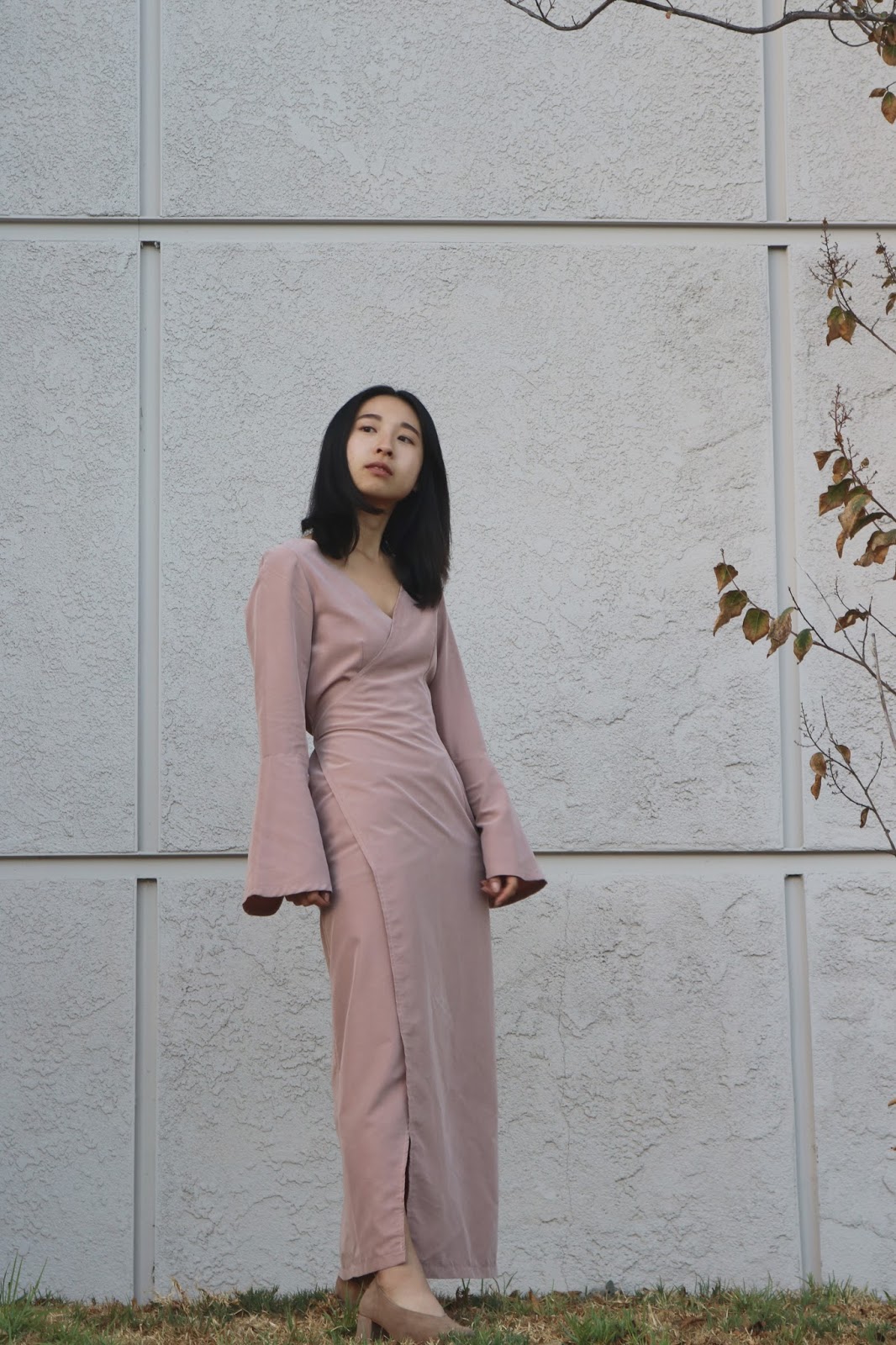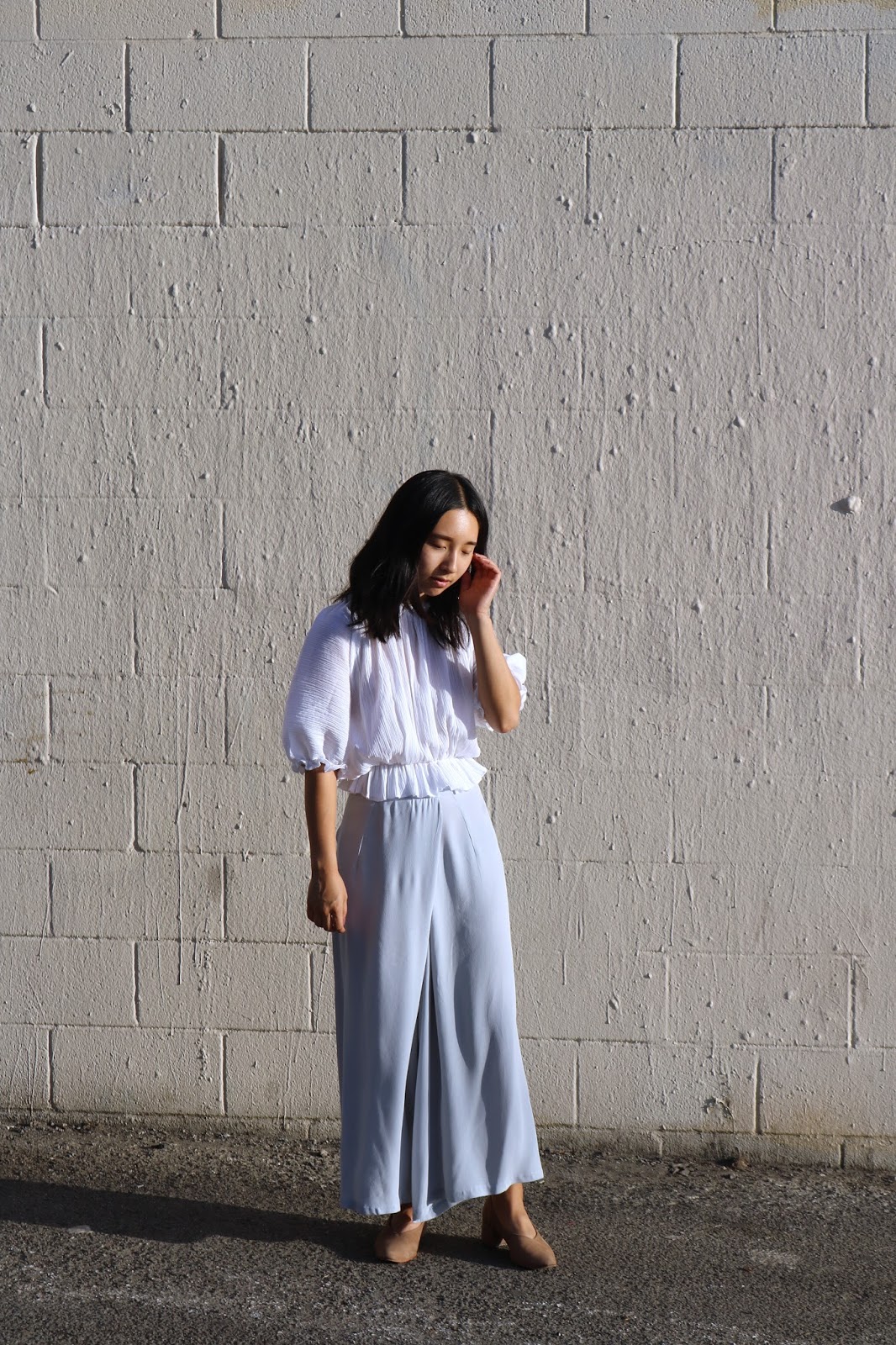
Eve Gravel Soft Machine Jacket, Thrifted Top and Pants, Zou Xou Belu Pump in Sand Suede
SLOW SERIES
-Part IV-
Transitioning into Slow Fashion.
I'd like to think that I learned about slow fashion at the perfect time. For almost my entire life, I've been an avid shopper and would frequent the mall at least once a week. This all changed after the summer of 2015. I went on a trip to Japan and shopped at the usual fast fashion stores - Gap, H&M, GU...the list goes on. When I tried on clothes at those retailers, I realized that the clothes fit me just about perfectly. I have a smaller frame and the clothes sold in Japan were made for what would be considered petite in America. Surprisingly after this trip, I unintentionally cut off shopping. It just wasn't appealing to me anymore since nothing really fit as well as it did in Japan. There was a sort of gap time between this and me learning about slow fashion. Within this time, I mainly wore what I had purchased in Japan and probably purchased about 5 pieces of fast fashion clothing. Because this happened to me right before learning about slow fashion, it made the transition a lot easier than it would've been weaning off fast fashion.
So how did I transition my wardrobe over from fast fashion to slow fashion? I came to 3 solutions: thrifting, shopping ethical and sustainable brands, and swapping clothes. Prior to learning about slow fashion, I've probably only thrifted a handful of times. When I moved to Los Angeles, I was introduced to the American Cancer Society Discovery Shop which is now my go-to thrift store. I found that this store was curated and I really liked the style. I've discovered more curated thrift stores and find that they're fun because there's always something new within a certain style parameter. I feel that thrifting is the most sustainable option because it gives new life to garments and deters it from going into landfill.
The second solution of moving towards slow fashion is to shop sustainable brands. This is easier said than done because it is a difficult transition mentally and financially. The cycle of shopping fast fashion is enticing since there's always something new but after a while, I felt that I had so much clothes I didn't wear and it just didn't feel right to have so much, not to mention the huge clutter in my room. I went through a phase of donating a large amount of my clothes and selling a few pieces.
Financially, moving from inexpensive fast fashion clothing to heftier priced slow fashion clothes can be a shock but there is something to think about. With shopping slow fashion brands, I feel that I think through whether I really need or want something before making a purchases. I try to imagine which pieces in my closet I can wear it with and whether it's really something I would wear over time. This takes a while to get used to but once I started doing this, I noticed that I was excited to wear certain pieces to the point that I would reach it for every time it came out from the laundry. With trial and error, I feel that I am heading towards a more fulfilling wardrobe.
Lastly, I've attended a few clothes swap parties and they were a lot of fun. My first one was with friends and friends of friends. We all gathered and brought clothes we no longer wanted but didn't want to donate. Since I have a pile of clothes I am slowly trying to get rid of, I selected pieces I thought my friends would like and brought those. At the night of the clothes swap, we had food and drinks to start. We conducted the swap by giving each person time to describe and sell each garment, followed by asking if anyone wanted it after each clothing was presented. It was comical to see the different ways each person tried to offer their clothes but we also got to know each other since I didn't know everyone at the party. Because of this, I think clothing swap parties are not only a good way to get new clothes and let go of old clothes, but it has an added social aspect to it. So far, these have been my solutions to transitioning into slow fashion.
EVE GRAVEL'S STORY: Eve Gravel founded her ready-to-wear women's line at the age of 22 in Montreal. She ensures her designs are timeless with unique details and a touch of femininity. Eve designs everything in her Mile-End workshop and produces locally and ethically in Montreal. Each fabric is chosen carefully and all prints are created in her workshop. I love that this coat keeps me warm but is simultaneously functional with side slits.



















